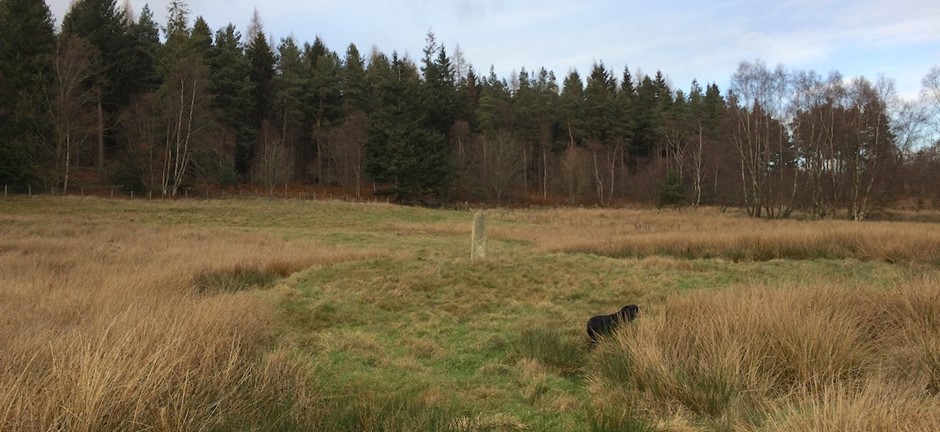
At Cragend Farm we have six Cattle Rubbing Stones.
There are three on the top fields and three in the bottom fields. We were surprised to find out that they are relatively rare these days.
Sadly one of them is sinking in a part of our SSSI (Site of Special Scientific Interest) area in boggy ground but can still just be seen. It suggests that at the time of placing that area was not subject to the artesian springs that pop up all over the lower hills.
In the past it seems that these stones were moved to allow for modern machinery to work the fields. The good news is that because the farm never really modernised in the way that others did, the remaining six stones are still in their original places.
We are unsure if they pre-date Lord Armstrong of Cragside, as his passion for cattle would suggest that he put them there; however, history suggests that they may be early 1700's put there by The Duke of Northumberland when the fields started to be enclosed in order to stop the cattle rubbing on the fencing.
Cattle Rubbing Stones, also known as Clawin Posts, were once a common sight in pastures and were provided to allow cattle to rub their skin without causing damage to field infrastructure such as fences and straining posts or natural features such as trees.
Cattle rubbing stones need to be well dug into the ground and/or packed with stones and have also to be made of hard stone types that can withstand the considerable weight and strength of cattle.
Our stones can often be distinguished from megaliths such as standing stones by having angular edges showing that they have been cleaved during quarrying rather than be glacial erratics or from other natural sources. Some stones may show drill marks from the quarrying process. Nonetheless, ours are old enough to be fully incorporated into the natural environment as the lichen and moss have taken hold.
An indicator that a stone is used by cattle for alleviating skin irritation is the smooth appearance of the areas that have been used by many generations of cattle over the years. The ground around rubbing stones is often churned up and free of vegetation.
Early stones may have ancient carvings on them such as cup and rings, petrosomatoglyphs, Pictish, early Christian, Ogham, etc. which indicate their origins even if they have a rubbing stone function. Ours look as if they may have been chiselled but it is all very worn, however there are a few that have circular deep areas and interesting patterns still showing.
Find Out More About Cragend
Cragend Farm has a interesting and diverse history, from technical innovations to historic buildings. Tied in closely to the neighbouring Cragside Estate home of Victorian inventor and industrialist Lord Armstrong.
Wonderful Dog Friendly B&B and self catering cottage, Amazing unique historic site, (featured on TV: Matt Baker’s Travels with Mum & Dad North East)
Original Cragside Architecture and Machinery. Celtic Camp and Ducal Border Reiver settlement, remodelled by Victorian Lord Armstrong of Cragside as his show case for hydraulic machinery.
ACCESSIBILITY STATEMENT in ABOUT US.









